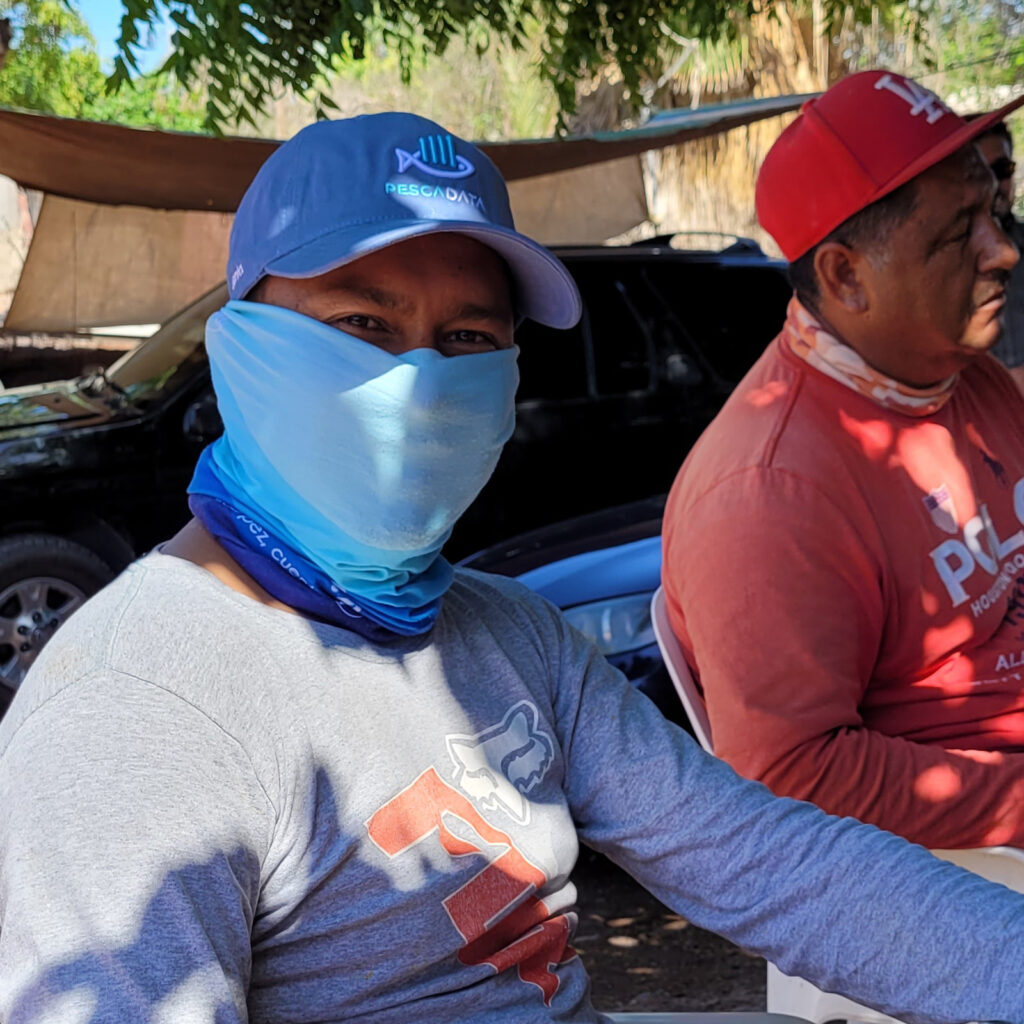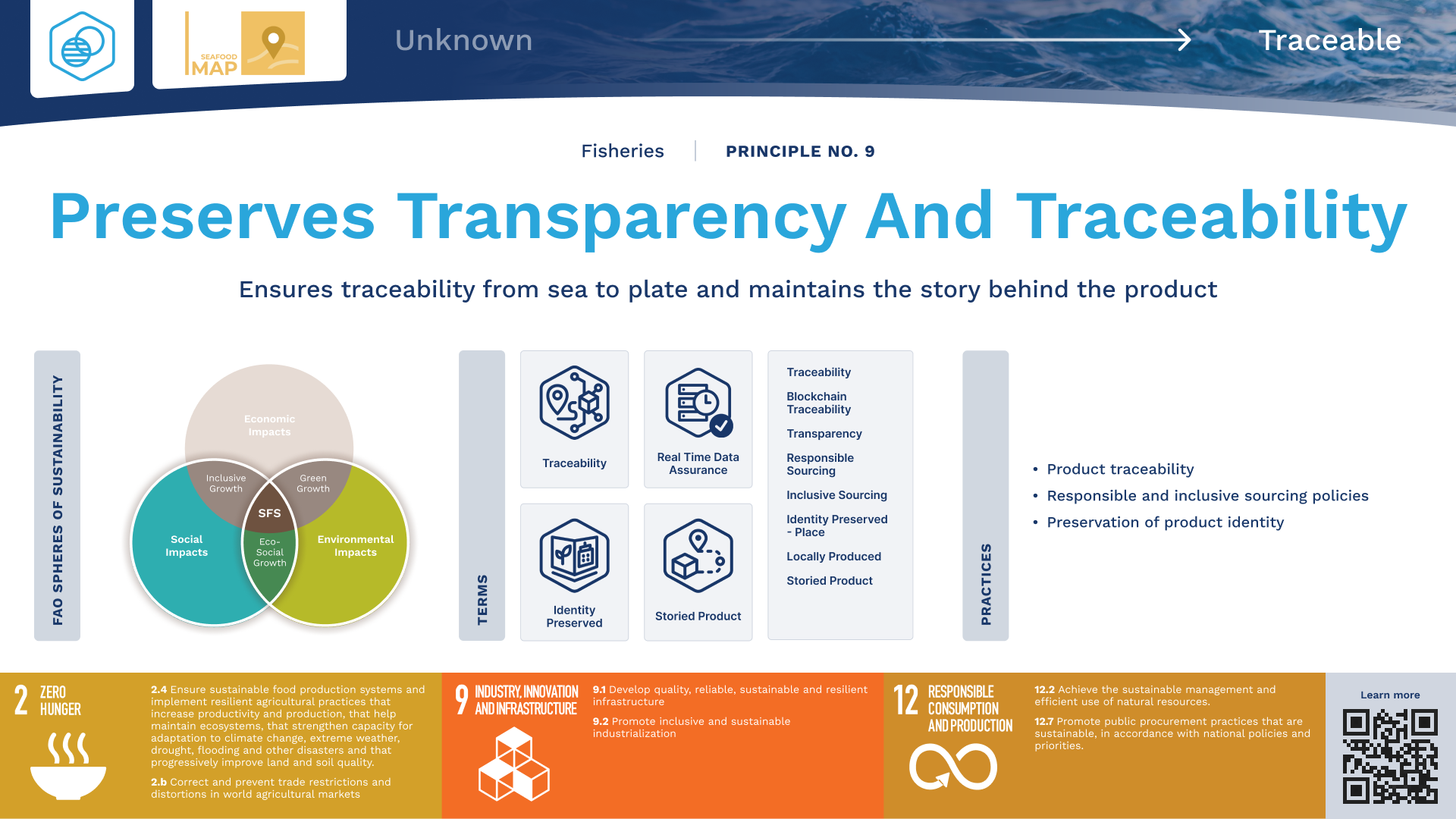
Fisheries – Principle 9 | Seafood MAP

Eachmile Technologies
Key Topics Explained
How do we ensure fisheries products are transparent and traceable?
It is not so much about ensuring traceability, you either have data or you don’t, so it is more about ensuring that the data you have is accurate. However, to ensure that the traceability data elements are accurate, verification is required, and often multiple times at the various critical tracking events between stakeholders. Data can be accurate/precise, inaccurate/imprecise, incorrect, or false. With over 12,000 species of seafood, and many common names for the same species, the genus may be correct but the species or subspecies incorrect (inaccurate), it could be the wrong genus or family (incorrect), and if the species name, and other data elements, have purposefully been entered incorrectly (false), it is illegal.
To verify a species a DNA check is required and, although improvements in the technology are making it more efficient, it takes time, can be costly, and the risk of mixing for “many to one” seafood products (such as a box of shrimp) still exists. Machine vision is assisting in species identification but there are barriers to adoption, and once a fish has been processed, species identification becomes more difficult.
Although verification technologies such as long range vessel tracking and identification, microchemistry, isotopes etc. are all helping to close the noose on IUU fishing and product mislabelling, disinformation and fraud, their application is mostly used for risk-based assessments and audits.
Immutable records via the use of blockchain technologies and tokens such as Fishcoin can help build trust in the veracity of the data between stakeholders and incentivise data collection. These technologies, along with the potential to monetize the stories behind the seafood on behalf of the fishers and farmers, will help us transition to more transparency and from fragmented to cooperative, coordinated and collaborative value chains.

N/A
N/A